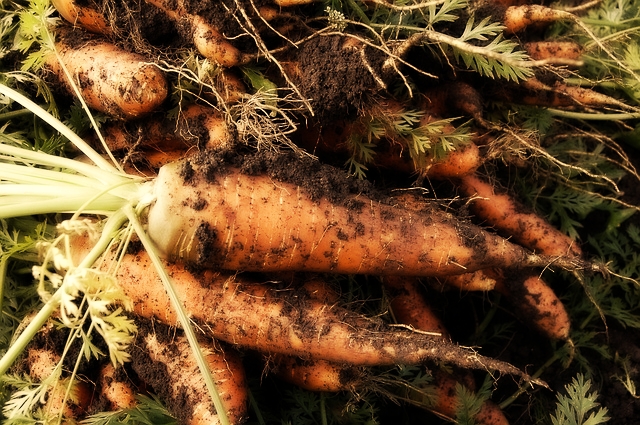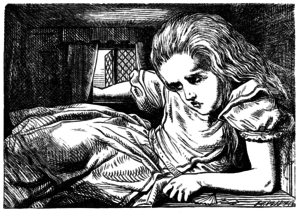
The Conversation
I was talking last week with Gary Oppenheimer, Founder and Executive Director of AmpleHarvest.org – an organization that helps gardeners who grow food (sometimes to excess) find a local food pantry that can accept fresh produce. We were discussing an initiative that would introduce more gardeners to the program to generate even more produce for pantries.
The Number
“Did you know there are 42 Million people in this country who grow food in their gardens?” Gary asked at one point in the conversation. I paused before I answered. I knew the number 42 Million. I’ve mentioned it in conversations, referred to it in reports, tweeted and blogged about it for the past two years, but for an eerily different reason.
“Forty-two Million,” I answered, “is also the number of people who receive SNAP benefits [formerly food stamps] in this country. The irony bordered on dark humor.
Rule 42
I thought of another 42 that day, from a passage in Alice in Wonderland. Near the end of the book, Alice, now much larger, is put on trial by the King. After Alice disrupts the proceedings he invokes rule 42, “All persons more than a mile high to leave the court.” Alice will have none of it.

Alice: That’s not a rule: you invented it just now.”
“It’s the oldest rule in the book,” said the King.
“Then it ought to be Number One,” said Alice
That day I mused about hunger, about Alice, and about national priorities.
The Oldest Rule in the Book
America’s long history of hunger can be traced back to Mayflower landing at Plymouth, and the struggle settlers faced in those first few years. Hunger would return in the 1800’s as the advancement of the industrial revolution meant fewer jobs while an influx of immigrants flooded the labor market. Houses for the poor began to spring up.
Then it was the dust bowl, and the Great Depression of 1929, when soup kitchens and bread lines formed. Later in 1968, Robert Kennedy and Martin Luther King would each tour the country and weep at the poverty and hunger they found in the south and appalachia. CBS would produce the landmark documentary Hunger in America, highlighting a problem many were not even aware of. In the late 70’s and 80’s food banks would spread across the country to meet the demand of those struggling to put food on the family table. After the financial crisis of 2008, the number of food insecure individuals in the US would rise to 50 Million, where it has stubbornly remained.
In 2017, Philp Alston, the UN’s special rapporteur on extreme poverty and human rights, spent 10 days touring America. In a scathing report back to the UN, Alson would write “The United States is one of the world’s richest, most powerful and technologically innovative countries; but neither its wealth nor its power nor its technology is being harnessed to address the situation in which 40 million people continue to live in poverty.”
Hunger may be the oldest social issue we face, but unfortunately, it has never been the number one priority.
About Ample Harvest
It’s a very simple concept. Most gardeners have excess vegetables during the growing season – some have a lot. So rather than cart bags of zucchini and tomatoes around to family, friends, coworkers, etc, who may not even use the produce, gardeners can easily use the Ample Harvest Pantry Finder to locate the nearest food pantry, find their hours of operation and donate their excess and reduce hunger in their communities.